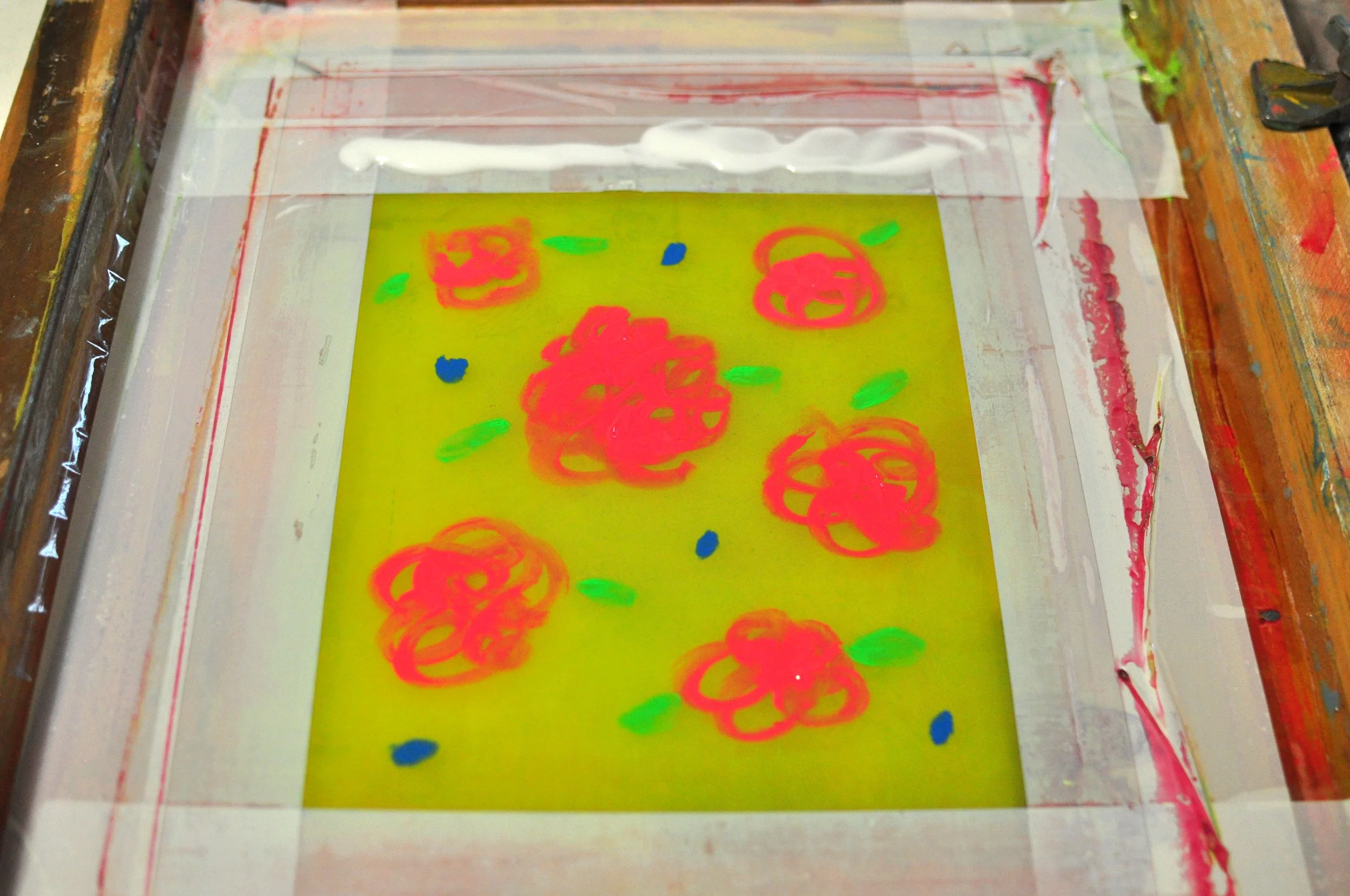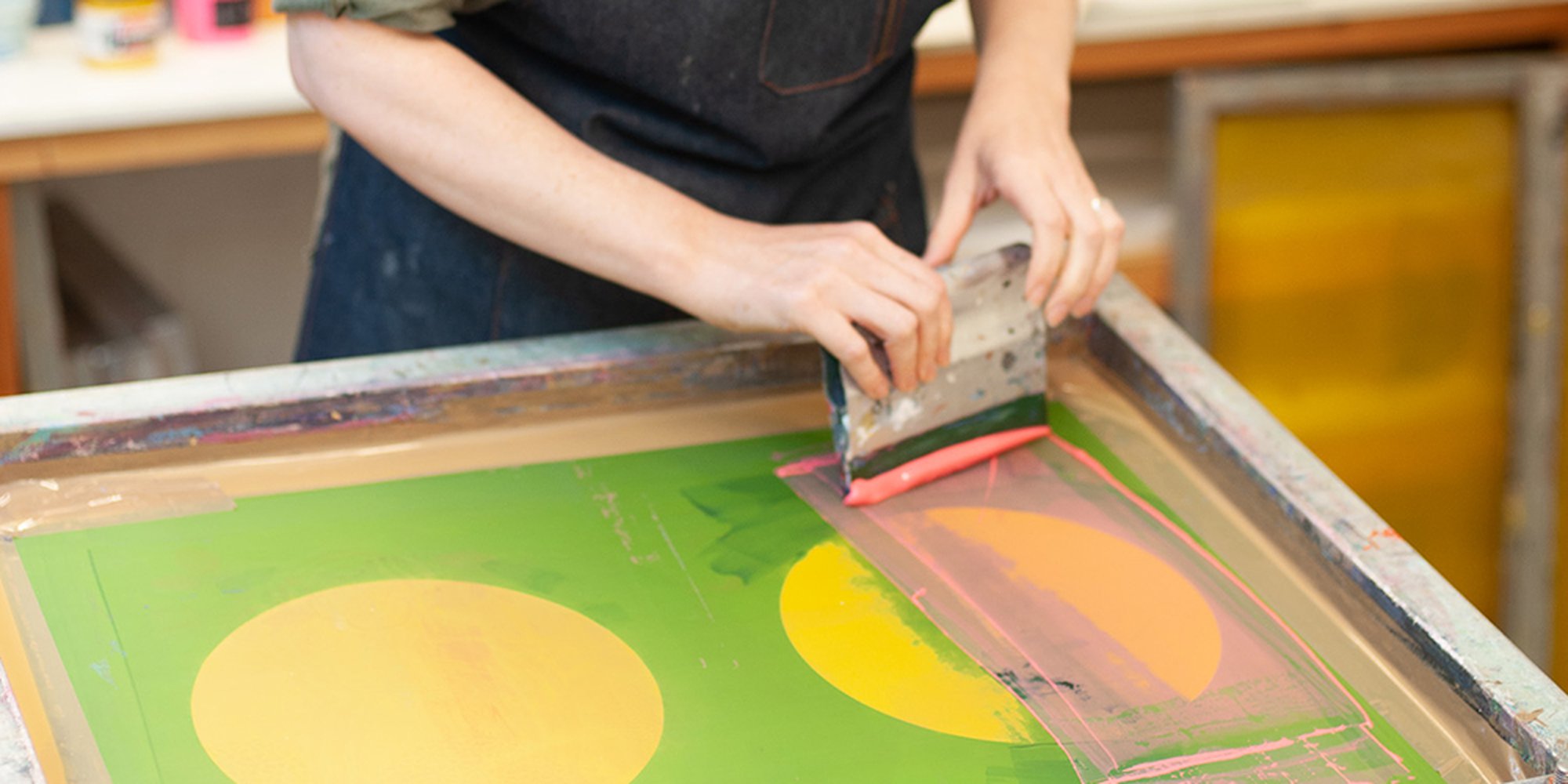The Important Overview to Understanding Screen Printing and Its Versatile Utilizes
Screen printing has a rich history that goes back to old times, evolving into an advanced strategy used throughout numerous sectors today. This guide explores the complexities of the screen printing procedure, describing its applications in fashion, advertising and marketing, and home décor - 10:9 Design Abilene. Comprehending these basics can open up creative capacity for both creative and commercial tasks. The complying with sections will certainly expose vital tips and strategies to enhance one's screen printing endeavors
The History of Screen Printing
Although screen printing has origins that map back centuries, its development mirrors the artistic and technical improvements of different cultures. Stemming in ancient China, the strategy was originally utilized for decorating fabrics and later spread to Japan, where it came to be integral to Ukiyo-e woodblock printing. The technique moved to Europe in the 18th century, where it acquired appeal among artisans and business printers. The invention of photo solution in the 20th century revolutionized screen printing, enabling for even more elaborate layouts and greater effectiveness. Musicians like Andy Warhol even more propelled its popularity, making use of the medium to produce famous jobs that blended commercialism and fine art. By the late 20th century, screen printing had actually established itself as a functional technique, used in fashion, advertising and marketing, and art. Today, it continues to progress, integrating electronic technology and broadening its applications throughout various markets.
The Screen Printing Refine Explained
Screen printing transforms creative visions right into substantial styles via a collection of specific actions. Initially, a photo is created and after that transferred onto a screen, typically constructed from fine mesh material stretched over a framework. A light-sensitive emulsion is used to the screen, which is revealed to light, setting in locations not covered by the photo. After rinsing the unhardened solution, a pattern is created.
Next off, the screen is positioned over the substrate, whether it be fabric, paper, or another material. Ink is then pushed via the open locations of the stencil using a squeegee, transferring the layout onto the substratum listed below. This process can be repeated for multiple colors, needing different displays for each and every hue. Lastly, the printed product is treated making use of warmth to assure the ink sticks appropriately, leading to a long lasting, dynamic style on-line.
Sorts Of Screen Printing Techniques

In addition, specialty strategies, such as discharge screen printing, eliminate color from the textile to produce softer prints, while aluminum foil screen printing uses metallic foil to accomplish a shiny surface (10:9 Design near me). Each method offers unique attributes, catering to numerous creative needs and manufacturing ranges, ultimately broadening the possibilities within the screen printing domain
Applications of Screen Printing in Various Industries

Furthermore, the signs and advertising fields make use of screen printing for developing distinctive screens and banners. This approach enables vibrant colors and elaborate designs that capture focus. In electronic devices, screen printing is utilized for applying conductive inks to circuit card, crucial for part connections. The home style sector embraces screen printing to generate unique styles on fabrics and wall surface art. In general, screen printing serves as a crucial tool across diverse fields, boosting items with customized and aesthetically enticing graphics.
Tips for Effective Screen Printing Projects
While embarking on a screen printing project, cautious focus to information can significantly improve the last outcome. Picking premium products is important; this consists of the screen, inks, and substratums. Using proper mesh matters can affect ink deposition and detail resolution. Prep work is equally essential; thorough cleaning of displays and proper exposure times assure crisp prints.
Next, accurate enrollment is critical for multi-color prints. Making use of positioning tools can aid achieve precise layering. Additionally, testing prints on scrap products prior to production aids recognize possible concerns without throwing away resources.

Often Asked Questions
What Products Are Ideal for Screen Printing on Material?
Cotton and polyester blends are excellent for screen printing on fabric as a result of their resilience and ink absorption. In addition, specialized textiles like silk or canvas can produce one-of-a-kind textures and surfaces, boosting the overall design high quality.
Just how Do I Clean and Maintain Screen Printing Devices?
To keep and cleanse screen printing devices, one must routinely clean screens with proper solvents, check squeegees for wear, oil relocating parts, and shop all products in a completely dry, dust-free setting to extend their life expectancy.
What Are the Ecological Impacts of Screen Printing?
Screen printing can have substantial environmental impacts, including chemical waste from solvents and inks, water usage throughout cleansing procedures, and energy usage. Sustainable techniques and environmentally friendly materials are essential for lessening these adverse results.
Can Screen Printing Be Done in your home Properly?
Screen printing can be properly done at home with the ideal products and strategies. Hobbyists can create high quality prints, though success relies on their ability degree, devices, and understanding of the process involved.
What Are the Expenses Associated With Starting a Display Printing Service?

Starting a screen printing service includes prices for devices, materials, and work space. Preliminary expenses typically range from a couple of hundred to several thousand bucks, depending upon the range, high quality of machinery, and preferred production capability.
Screen printing has a rich background that dates back to ancient times, progressing into an innovative strategy utilized throughout various sectors today. Another method, rotary screen printing, utilizes round screens, facilitating constant printing on textile rolls, thus boosting efficiency for large productions. Furthermore, specialized techniques, such as discharge screen printing, eliminate color from the textile to create softer prints, while aluminum foil screen printing uses metallic foil to attain a glossy surface. In the style market, screen printing is extensively used to develop lively layouts on apparel, making it possible for brand names to showcase their special designs. Cotton and polyester blends are perfect for screen printing on material due to their durability and ink absorption.